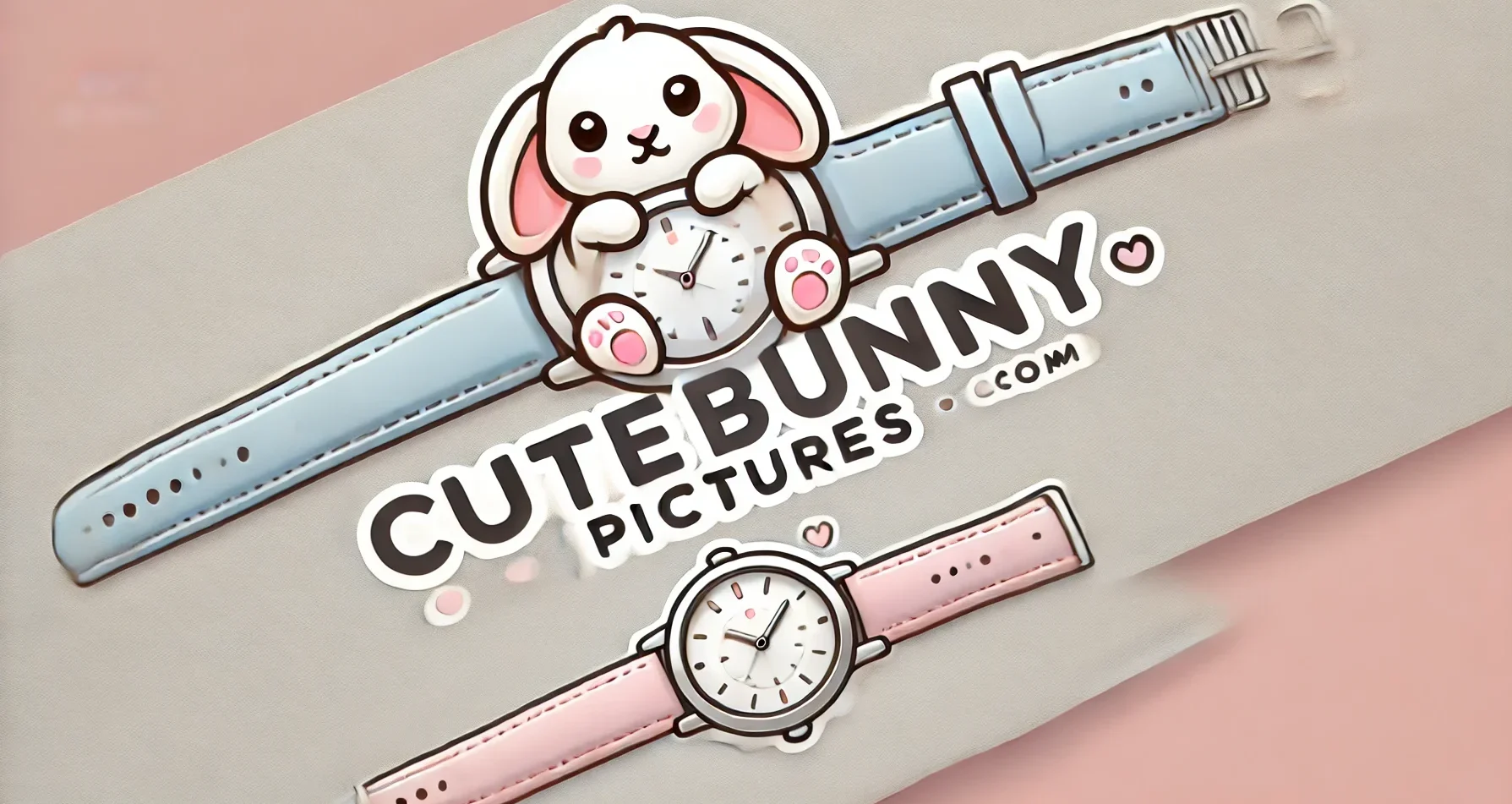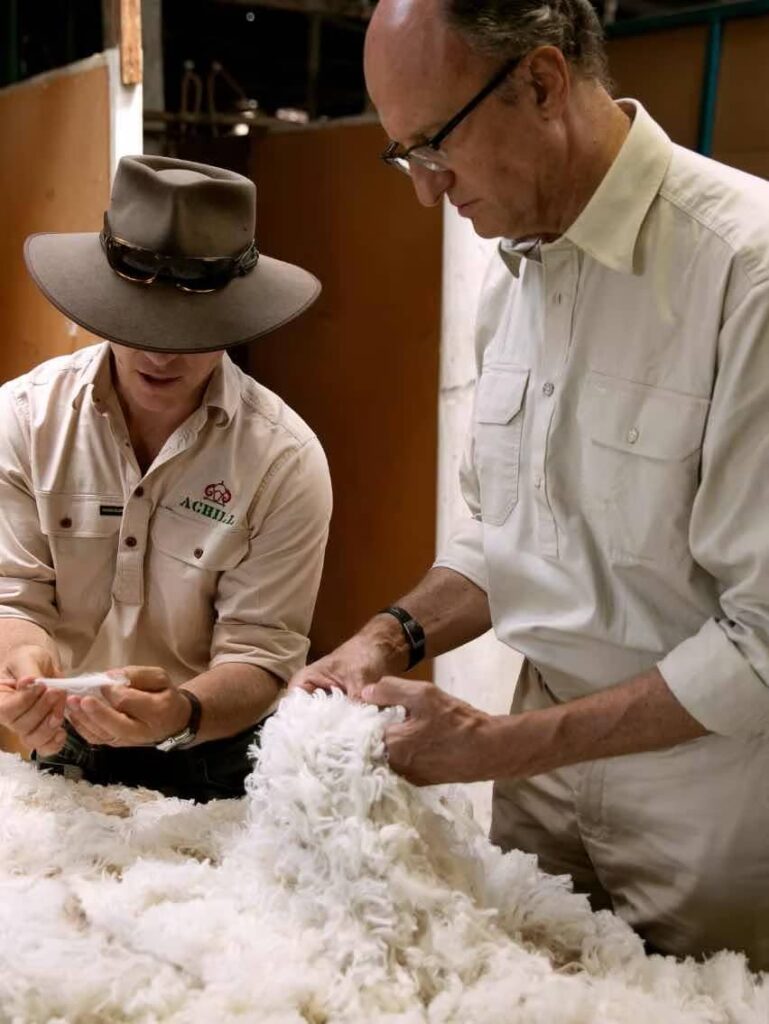
Luxury brands today increasingly recognize the importance of integrating authentic Indigenous culture and practices into their collections. Moving beyond merely aesthetic inspiration, brands are now engaging directly with Indigenous communities in meaningful partnerships, demonstrating a commitment to ethical sourcing, sustainability, and genuine cultural appreciation.
Ralph Lauren and Navajo Artistry: Celebrating Indigenous Craftsmanship
In 2023, Ralph Lauren introduced a groundbreaking Artist in Residence initiative, partnering with Diné (Navajo) textile artist Naiomi Glasses. Glasses, a seventh-generation weaver, infused Navajo weaving traditions into a contemporary luxury collection. Featuring woven jacquard blanket coats, ranch-inspired jackets, and coats showcasing symbolic motifs like spider woman crosses and dragonfly patterns, the collaboration offered a rich tapestry of cultural storytelling and modern fashion.
More than simply fashion, the campaign was led by Indigenous creators, including renowned photographers Ryan RedCorn (Osage) and Daryn Sells (Navajo), alongside director Shaandiin Tome (Navajo). Ralph Lauren also dedicated part of the proceeds to Change Labs, empowering Navajo and Hopi entrepreneurs through business training and cultural preservation initiatives.
Historically criticized for cultural appropriation, Ralph Lauren’s partnership with Glasses signals a positive shift toward genuine cultural recognition and sustainable luxury practices.
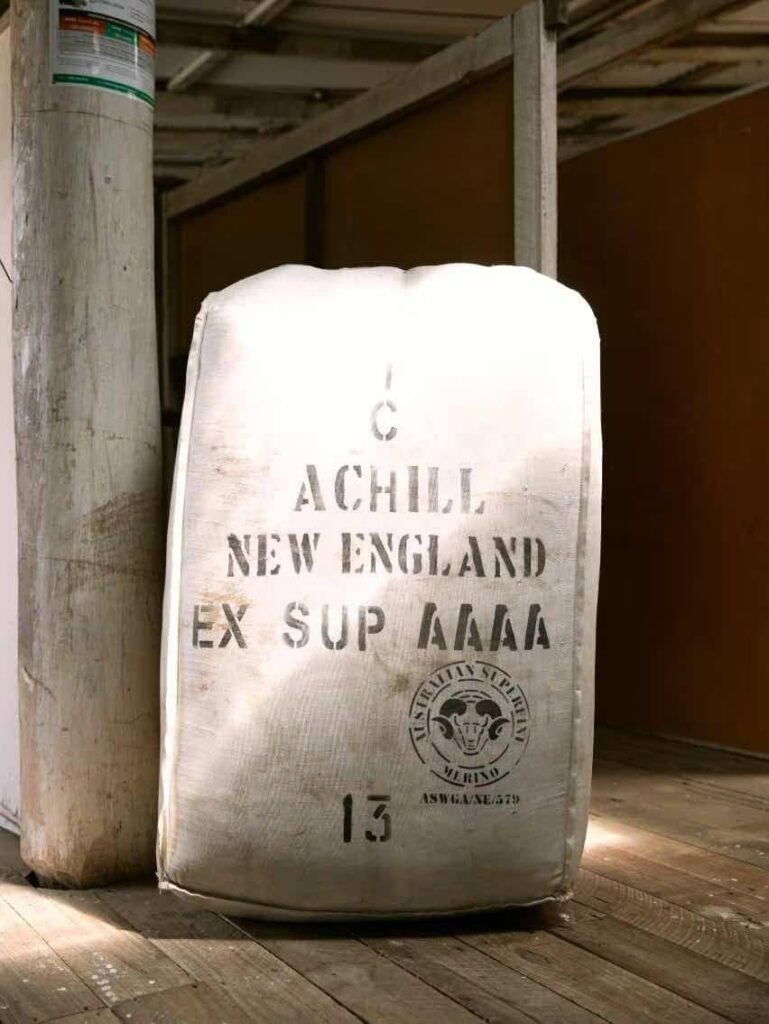
Johnstons of Elgin: Bridging Scottish Heritage and Mongolian Tradition
Johnstons of Elgin, a distinguished Scottish cashmere producer, is deeply invested in sustainable sourcing through direct collaborations with Mongolian herders. Addressing the environmental risks associated with overgrazing and climate change, the brand founded the Sustainable Fibre Alliance (SFA). This initiative supports nomadic communities through education in regenerative grazing practices and sustainable land management.
Their flagship “Haraacai” training program has successfully empowered young herders, blending traditional Mongolian herding techniques with contemporary ecological methods. As of 2024, Johnstons of Elgin aims to source exclusively from certified sustainable suppliers, ensuring complete traceability and ethical responsibility in luxury textile production.
Gabriela Hearst: Amplifying Indigenous Narratives through Fashion
Gabriela Hearst is known for merging sustainability with luxury fashion, exemplified through her Spring/Summer 2022 collection in collaboration with Navajo artisans. Working directly with fifth-generation Navajo weaver TahNibaa Naataanii, Hearst’s collection honored traditional Indigenous dyeing techniques and textile craftsmanship.
Facilitated by Judy Campbell-Clancy, an advocate connecting Navajo artisans to sustainable employment, the collaboration involved Indigenous storytellers like filmmaker Krystal Curley, who documented the creative process. Beyond Navajo collaborations, Hearst partnered with artisan collectives in Bolivia and Uruguay, showcasing her comprehensive commitment to authentic cultural representation and ethical production standards.
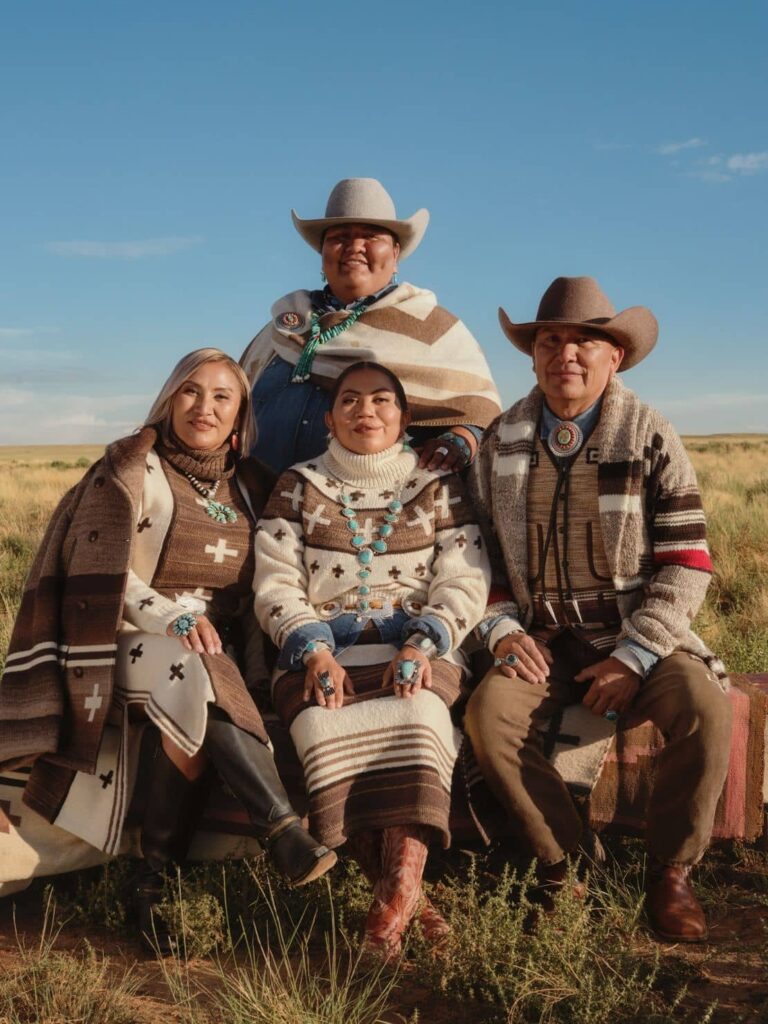
Dior and Mexican Artisans: Ethical Luxury Meets Traditional Expertise
In 2024, Dior’s Cruise collection represented a transformative collaboration with Mexican Indigenous artisans from Oaxaca, Puebla, and Chiapas. Dior’s creative director, Maria Grazia Chiuri, worked closely with local coordinators like Remigio Mestas and Hilán Cruz, integrating ancestral weaving and embroidery techniques into luxury couture designs.
The resulting collection celebrated garments such as traditional huipils and gabans, authentically co-created by artisans like the Zapotec of San Blas Atempa and Mayan weavers from Chiapas. Dior’s initiative moved beyond surface-level cultural references, instead positioning Indigenous artisans as co-designers, amplifying their voices, techniques, and cultural heritage.
Burberry’s Commitment to Afghan Cashmere Sustainability
Through its foundation, Burberry collaborates with Oxfam and PUR Projet to empower Afghan cashmere producers, who historically face economic instability and environmental challenges. The program offers training in sustainable livestock management, sustainable harvesting methods, and fair market practices, significantly improving livelihoods and ecological outcomes.
This strategic collaboration also contributes directly to multiple UN Sustainable Development Goals, emphasizing poverty alleviation, gender equality, and sustainable economic development. Burberry’s initiative actively reshapes the global cashmere market, highlighting Afghanistan as a valuable and ethically sustainable source for luxury textiles.

Zegna’s Innovative Agricultural Model: ACHILLFARM™ in Australia
Zegna stands out in luxury fashion through its vertically integrated model exemplified by ACHILLFARM™ in New South Wales, Australia. This 2,500-hectare farm demonstrates the brand’s direct control over the wool supply chain, prioritizing animal welfare, regenerative agricultural practices, and high-quality fiber production.
Complemented by its Oasi Zegna reforestation initiative in Italy, the brand underscores its environmental ethos and commitment to biodiversity. Zegna’s model exemplifies how luxury brands can balance ecological responsibility with traditional production processes.
Loro Piana and Seneca Artist Marie Watt: Cultural Reciprocity in Luxury Fashion
Luxury textile house Loro Piana has embraced cultural reciprocity through its collaboration with Seneca Nation artist Marie Watt. Known for exploring collective memory through textile art, Watt’s installation in Loro Piana’s New York flagship store introduced Indigenous storytelling directly into luxury retail spaces.
Loro Piana, renowned for sourcing rare fibers like vicuña and baby cashmere, has historically invested in educational and ecological initiatives in Peru, Mongolia, and the Andes. Watt’s collaboration further enriches the brand’s commitment, moving toward holistic cultural acknowledgment of Indigenous artisans and ecological stewardship.
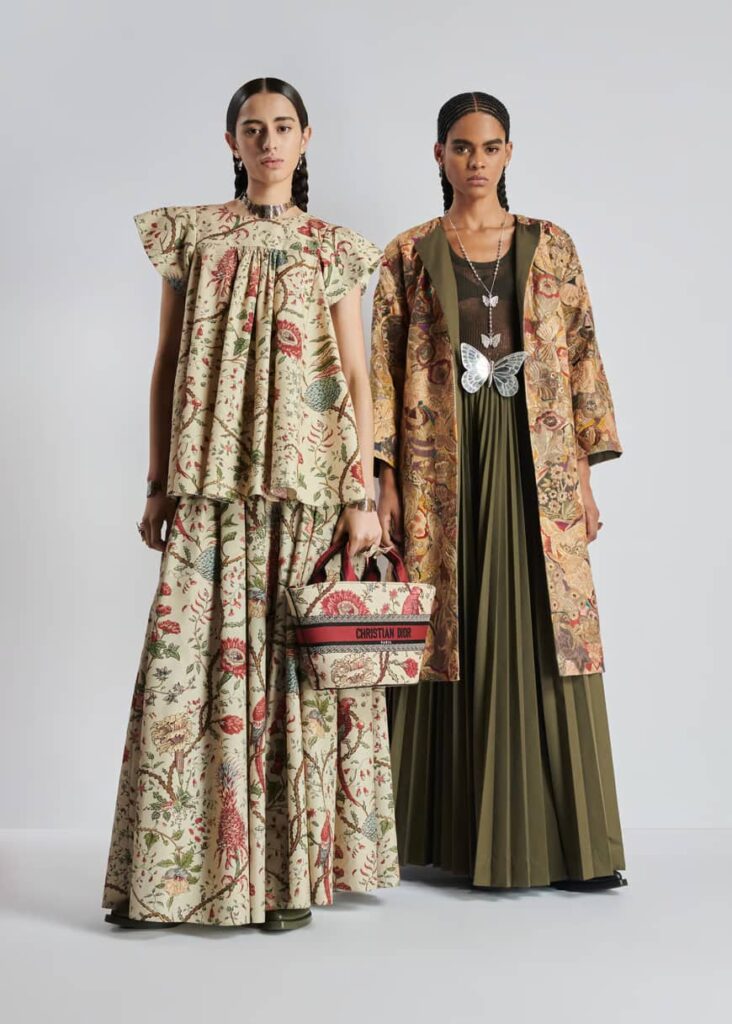
Conclusion: A Sustainable Future Through Indigenous Collaboration
Luxury brands like Ralph Lauren, Dior, Gabriela Hearst, Burberry, Johnstons of Elgin, Zegna, and Loro Piana represent a crucial shift in fashion toward ethical and sustainable practices. By genuinely partnering with Indigenous communities, these brands ensure cultural narratives are respected and sustainability becomes integral to luxury production.
These collaborations mark a profound evolution in the luxury industry, creating deeper connections between consumers, cultural heritage, and environmental stewardship, ultimately setting new standards for responsible fashion.

